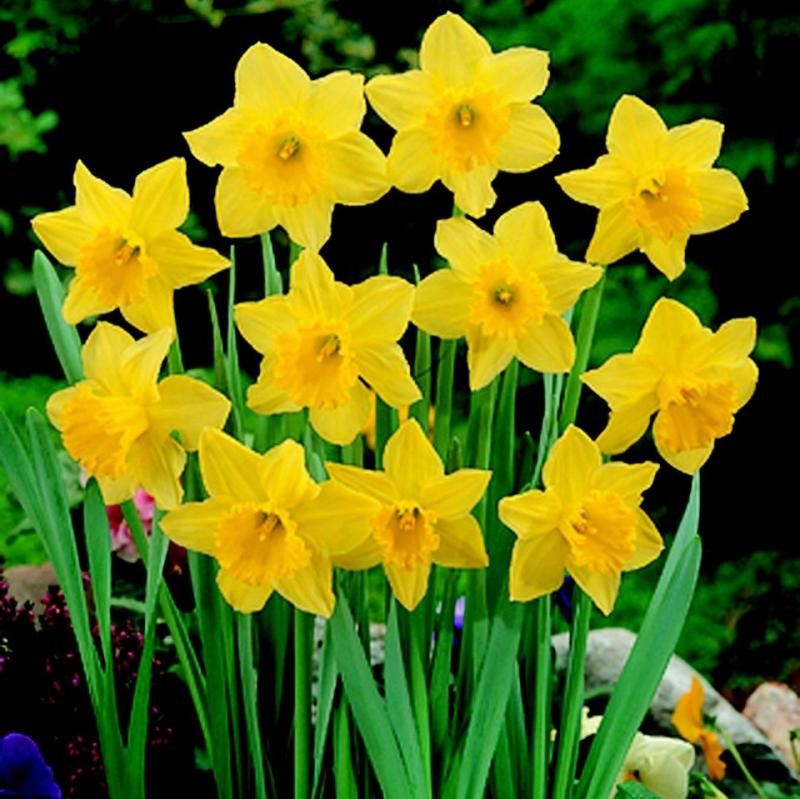It’s good to be king. At the end of the 19th century, John Kendall grew a daffodil with huge 4-inch-wide flowers that were rich, deep, golden-yellow. Named King Alfred, this daffodil was a huge success even though at the start, bulbs sold for nearly a king's ransom – a single bulb could sell for 6 pounds, 6 shillings, or about six weeks’ wages.
Soon, King Alfred daffodils became the gold standard of yellow daffodils, with millions planted each year. Just as any bubbly wine became known as champagne, any huge, deep-yellow daffodil was sold as King Alfred.
Today we have many King Alfred-type or so-called King Alfred Improved daffodils along with more modern contenders for the throne. King Alfred Improved is one of these, with its early-blooming, very tough flowers that seem immune to wind, rain and even late-spring snows. They bloom as early as crocus with 4-inch flowers that are breathtaking when planted in masses.
King Alfred Improved, at 16 to 18 inches tall, grows a bit shorter than the original. Like the original, it naturalizes easily, increasing in number and spreading across meadows and fields.
One of the best offspring of King Alfred is Golden Harvest, with huge, bright-yellow flowers and a ruffled trumpet. In fact, those huge swaths of yellow daffodils you see at parks and roadsides are probably Golden Harvest.
Another popular King Alfred type is the Marieke daffodil (pronounced mar–EE–keh). This stunning daffodil has the biggest flowers, and they tend to face upward. Marieke also blooms well in pots and can easily be made to bloom indoors, a process called forcing. It has several flowers per bulb, putting on an incredible springtime show. Marieke is resistant to winds, rain and bad weather, making it one of the toughest spring flowers.
Finally there is the heirloom daffodil Carlton, with its pleasant light vanilla fragrance. Carlton has light-yellow petals contrasting with its ruffled golden-yellow trumpet, giving it airy two-toned look. Carlton naturalizes easily and even does well in the deep South, where many daffodils fade.
All daffodils are deer-proof and easy to grow. Your daffodil bulbs will often have have two stems coming out of each bulb as if they are doubles. In fact they are called DN or double-nosed bulbs. Leave them together, and they will spread even quicker.
Always plant daffodil bulbs with the pointed side up, at at depth of 3 or 4 times the bulb's height. Never add fertilizer directly to the planting hole, as it could burn the roots. Once planted, your daffodils need no special care; they are the perfect plant-it-and-forget-it flower.
After daffodils have finished blooming, let the leaves die down naturally. This lets the bulbs absorb nutrition for next year's flowers. You can cover the fading foliage by planting perennials such as daylilies, which hide the fading leaves with their own leaves. Daffodils are hardy, easily blooming in USDA Zones 3-8.
While King Alfred is no longer grown, you can easily grow one of its successors. After all, the king is dead – long live the kings.




















































